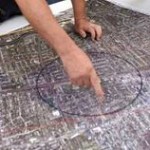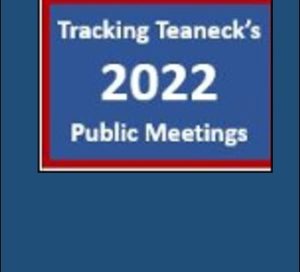Should there be timeout to consider the safety and environmental issues at 1475 Palisades Avenue?
The Teaneck Council acted on May 20, 2014 to approve a Developer’s Agreement between the Township, its Board of Adjustment and the proposed developer of a 9-story, 146-unit residential housing plan.(click here to see the resolution). At the time the developers agreement was approved by Council, there had been almost no discussion of how the contamination at the site would be addressed and NO DISCUSSION WHATSOEVER of the fact that this new high rise structure will lie within feet of the CSX tracks. Active recognition of the dangers posed by the rapidly increasing flow of rail tank cars carrying the explosive Bakken Oil and other dangerous cargo had just begun in Teaneck and the measures to assess the capacity of emergency responders to address and handle evacuation of any accident in Teaneck involving Bakken Oil had just begun. Is there a nexus between these two issues and the wisdom of providing a certificate of occupancy to this new building? Is it time to take a look? Let’s review what we know.
First: Contamination. According to materials provided to Council before the May 20, 2014 Council meeting, the Board of Adjustment passed this resolution after considering the many waivers it would need to grant to help address the developer’s own citation of environmental remediation costs that will need to be incurred in carrying out its residential development plan. (According to the BOA report “there are substantial environmental issues as a result of prior use and there will have to be a substantial cleanup on the site”. (click here)and go to p 67 of the Agenda Packet to see the 12/5/2013 BofA resolution outlining its support of the project and the waivers granted.) The Board of Adjustment, however, did not in this instance develop information about the contamination according to the Board’s Secretary [personal communication, May 20, 2014]. Additionally, the Township Health department had not been involved in discussion of the site and its environmental issues. The property is close to both of the Township’s 2 major Yeshiva high schools and is on a path used by many public school students walking to Teaneck High School and Benjamin Franklin Middle School. The Health Department at the request of Teaneck Transparency Trust Treasurer, Chuck Powers, began research on these environmental issues at the site. If carried out legally, environmental testing and remediation will be required in order to allow the current industrial/commercial uses of the site to meet the more stringent tests for any site to be used for a residential complex. Among the issues to be clarified are not only what the eventual contamination levels will need to be but any potential spread of contamination during the remediation itself.
 Second: Fire Safety and CSX:
Second: Fire Safety and CSX:
The Township’s fire department an office of emergency management has been actively involved in recent months in both assessing both dangers and plans and in training to respond to any Bakken Oil incident that might occur in Teaneck. The Record’s lead Local Section story on Wednesday August 12 described a meeting to inform Teaneck’s residents of the basic evacuation instructions (get out) for 8,000 residents who would be at immediate risk should their be an oil tanker explosion. click here for the Record story Town Council has held special meetings and many members have participated in rallies about the issue. However, if the Township’s fire department has been involved in active assessment of the fire safety issues (calculations of evacuation timing and likely success, for example) posed by a 9-story building so close to a potential CSX tank car accident or release, there has been no public release of it. (A request for same was addressed to the Township’s Fire Chief at the end of July but no response to that letter as yet been received) [The letter in its entirety is found below]
What do we know and when will we know it?
At a time not yet specified, there either has been or will be a “construction meeting” wherein both environmental and fire safety issues may be considered along with other issues of concern to the police, fire and building departments and the township attorney. The public will not be/ has not been allowed to attend that meeting [personal communication with the BOA Board Secretary, May 20, 2014]. It is unclear whether the results of such a meeting can be obtained through requests under the Open Public Records Act.
Of Note: Estimates of Construction Costs that require a Performance Bond by the developer were developed for the Board of Adjustment by the Township’s Acting Engineer and included a variety of infrastructure cost estimates as well as items such as 10 shade trees, 14 parking signs and shrubbery — but included no mention or cost estimate associated with environmental remediation and/or estimates of costs the Township might incur should remediation be left incomplete, for example. In a prior similar situation, the Board of Adjustment’s public hearings did actively discuss with the developer of the proposed Holuba site estimates of environmental remediation extent and cost, though that project never actually got to the current stage at which the 1475 Palisades project now stands. Examination of the State DEP records about the 1475 Palisade Avenue site (dating back to 1992) identify the responsible party for the site as Utilities Painting. The County Tax Board records and County Clerk’s deed recordings both indicate the purchase of the property on December 17, 2013 (12 days after the Board of Adjustment’s approval) to a 1480 Realty LP. But the Developer’s Agreement approved by Council on June 20 is with a 1376 Investments LLC. Efforts to clarify the relationship among these three parties and who it is (the owner, the developer and/or the state-identified responsible party) that has engaged a Licensed State Remediation Professional to conduct the testing and cleanup have not yet led to a better understanding of them.
Questions about the cleanup issue were raised at the May 20, 2014 Council meeting by Councilman Henry Pruitt. The Township attorney told Councilman Pruitt that those issues were between the site developer and the State Department of Environmental Protection. The Attorney made no connection whatsoever between those issues and questions that must be addressed by the Township prior to any granting of a certificate of occupancy. Pruitt alone among the 5 members of Council in attendance on May 20, 2014 voted against the resolution approving the Developer’s Agreement.
———————
Letter of inquiry to the Township’s Fire Chief
Charles W. Powers, Ph.D. 1374 Academy Lane Teaneck, NJ 07666
July 29, 2015
Chief Anthony Verley
Chief of the Fire Department
Township of Teaneck
Dear Chief Verley:
I write to inquire about the status of the process that is leading to the construction and issuance of a certificate of occupancy for a new high-rise residential building at 1475 Palisade Avenue – a project whose Developer’s Agreement was approved by Council in May 2014.
I also write to inquire as to the views – yours and the Department’s – as to the safety, specifically the fire protection safety – of occupants in the top four floors of a 9-story structure which will have been built just feet away from the CSX tracks. The Township has been increasingly concerned about safety challenges (evacuation routes, the emergency preparedness capability, the likely timing of suppression success) should there be an accident on the tracks in Teaneck. It would seem appropriate to rethink plans of all sorts – including for planned construction – in light of the data and recent operations record of Dakotas’ Bakken Oil bearing rail cars that pass through Teaneck every day and are destined to be traversing our town more frequently and apparently with rail loads that are not in the near term even going to undergo the stabilization of oil with the light ends characteristics of Bakken Oil that has been required prior to transport in and from southern states.
I listened with interest (and a bit of professional agreement) to your Department’s representative at the “community safety meeting” a week ago last Wednesday – and his clearly accurate admission that the Department and Township would be very limited in its ability to do anything but facilitate evacuation and emergency escape from the myriad of our educational and residential structures near CSX were there to be a Bakken Oil explosion at all comparable to those which have occurred in Canada, West Va., and elsewhere. I commend the Department and the steps it is taking with departmental training, some institutional safety and evacuation planning for various emergency scenarios and some increased equipment capability – and your efforts to work closely with County Exec Jim Tedesco and his OEM people. The issues of evacuation are far more complicated than saying head east…or west. Yes this train emergency response scenario is a monumental challenge and I was pleased to hear the forthrightness of your representative.
But as I put all this together, my mind went to 1475 Palisade Avenue– a project about which I have been previously worried in respect of what our then Acting Engineer did not do to assure a performance bond that included the costs of that contamination cleanup activity — and then the answer that Attorney Turitz gave on May 5, 2014 to Councilman Pruitt’s question about that issue (essentially- “that’s DEP’s, not our business”). I did not buy that. Since when don’t we care about kids eating the really contaminated 1475 dirt – as compared to the essentially clean stuff in Votee.
But now the trains! In light of all the expressions of official concern and efforts to control (and admit the limitations of our jurisdictions) in respect of the CSX rail loads, can we ignore the fact that we are primed to allow the construction of a 9-story building cheek-by-jowl with those tracks? Can it really be said that the township could protect people who would be on the upper floors of those buildings and have so much less opportunity to get down the stairs to safety than normal safety calculation metrics would require? And if we cannot say how the township would do so, is there any public safety justification for providing the developer with a certificate of occupancy? And in fairness, should we act now rather than after this building is built?
As you know, issues of energy and the environment safety and remediation are ones about which I have built an international reputation. I consider you and Health Department director Ken Katter to be a cut above the typical municipal officials whose responsibilities overlap somewhat with that expertise– and surely you two are among the several most capable officials in our town.
If I am wrong – i.e. that you DO know how you would save those upper floor 1475 occupants, please explain how. lf not, what are you and Ken, and I and capable people on the Council going to do to take the required preventive action – simply not allow people to live in those unsafe circumstances?
Sincerely,
Charles W. Powers, Ph.D.
1374 Teaneck, 07666
201-214-4937




